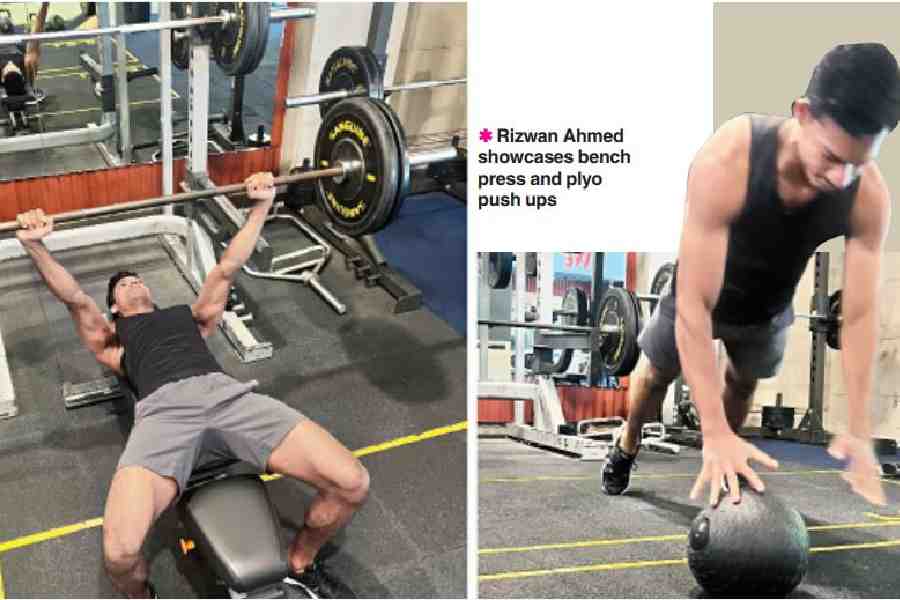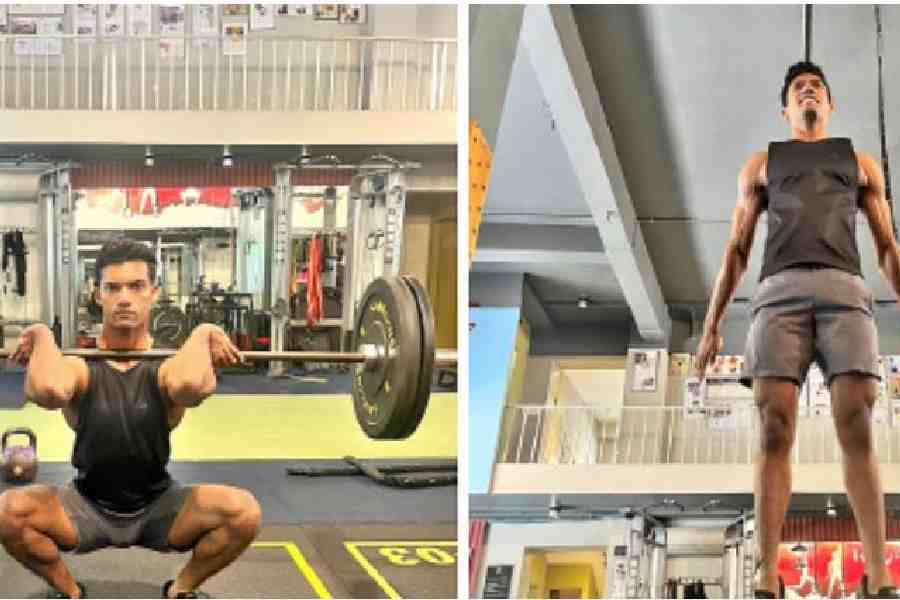Over the last couple of years, there has been a high buzz generated in the strength and conditioning world by the concept of post-activation potentiation (PAP). Recently, it has flowed from the performance arena into the realm of health and wellness and terminal-stage rehabilitation programmes as a means of maximising the body’s ability.
What is PAP?This is a strength-training technique originally defined by D.W. Robbins and published in the International Journal of Sports Medicine as far back as 2005. However, it is only recently that this protocol has picked up momentum, thanks to the practical and theoretical impetus provided by strength and rehabilitation coaches like Eric Bugera, CSCS, MSC Kinesiology, and Daniel Lorenz, DPT, ATC, CSCS. This is a new rage.
Simply put, it is a phenomenon by which the force exerted by a muscle is increased due to its previous contraction. It is a theory that purports that “the contractile history of a muscle influences the mechanical performance of subsequent muscle contractions”.
You will do back-to-back sets of a heavy strength-based lift followed by an explosive plyometric move. The first exercise gets your body bio-mechanically and neuro-muscularly ready to blast for the second ballistic movement. Typically, it requires pairing exercises that necessitate similar movement patterns — for example, squats followed by box jumps. Deadlifts followed by explosive hip thrusts or kettlebell (really light-weighted) swings. Your body’s response (acute adaption) to the first exercise sets you up to really exploit your full power potential in the next move.
PAP relies on the fact that your muscles and nervous system can be primed or pre-loaded to perform well. Sometimes, we have noticed that lifting 90 per cent of your max in one set and then dropping the weight to 75 per cent can make your second set feel easy: almost like a warm-up set! Do you know why? Because your body and mind were ready to go all out again, and then you pleasantly surprised it instead by channelling all that potential intent into a lighter weight. You go boom!
Technically speaking, excitation of the nervous system produces an increase in contractile function due to a heavy load conditioning stimulus.
Ideally, you want to follow the strength movement with an exercise that uses the same muscles in the same action, and allows you to move explosively, but does not require a lot of skill, coordination, and precise timing. That’s because, naturally, you are going to be exhausted from the strength exercise, and you don’t want to do a high-skill exercise like an Olympic lift in that situation.
What’s the rationale?
Since excitation of the nervous system produces an increase in contractile function due to a heavy load conditioning stimulus, there is an increase in muscle force and the rate of force development (RFD). At the end of the day, you develop a stronger muscle — a muscle that not only generates strength but also power and speed. All of these features have carry-over benefits into real life as well as rehabilitative methods.
Post-activation programme As a prudent and conservative practitioner, and respecting the laws of progression, it is better to integrate PAP gradually into the programme instead of layering everything in all at once. Begin by using PAP with one strength move once per week and build it up slowly from there.
A word of caution: Before you begin each session, thoroughly warm up and complete your ramp-up sets. Given below is a very simple and uncomplicated PAP protocol used by Eric Bugera:l Squat-focused: Back squat x three reps, 85 per cent one-rep max (1RM). 15-second rest. Box jumps x 5. Four-minute rest.l Bench press-focused: Bench press x four reps, 80 per cent 1RM. 15-second rest. Plyometric push-up x 5. Four-minute rest.l Deadlift-focused: Deadlift x three reps, 85 per cent 1RM. 15-second rest. Double kettlebell x 8. Four-minute rest.l Overhead press-Focused: Overhead press x four reps, 80 per cent 1RM. 15-second rest. Wall ball x 5. Four-minute rest.
Ensure that you are doing exercises that you are very familiar with so your body can focus on generating power rather than learning new exercises. For example, if a PAP protocol calls for you to do box jumps but you haven’t mastered them yet, consider substituting them with jumping lunges or, even better, squat jumps. If your movements need constant teaching cues and corrections from your coach, then maybe they are far too progressed and advanced for you. Tone down the intensity a notch to do exercises that you are more familiar with.
Eric Bugera warns that while post-activation potentiation can be an extremely useful tool, it is a rather intense one. You want to make sure you’re giving your body enough time to recover fully. How you integrate PAP into your programme depends on several factors, including your goals, regularly-scheduled exercises, and your absolute strength.
The goal
Training for maximal strength or power output benefits the most from PAP. Some benefits of PAP, like improved cognitive involvement or muscle-tendon stiffness, may be applicable to all forms of your training. But the true performance-enhancing benefits of PAP are found in strength or power workouts. In times of intense training or peaking, PAP can be the technique that helps you realise “your true potential”.
Exercise selection
Selecting the appropriate exercises to use PAP with is also an important decision that affects how often you will be using the technique. Heavy compound exercises like squats paired with sprints and jumps are one of the most effective ways to use PAP. With that in mind, you can only perform these exercises with so much frequency within a programme to maximise recovery. This will be dictated by how often you squat, jump, or sprint.
You’ll want to pair exercises that follow the same movement patterns. For example, put bench presses with plyometric push-ups or deadlifts with kettlebell swings. This way, you’ll be priming the right muscles for maximum engagement in your explosive round of work.
Benefits of post-activation potentiation
Easy to programme: For athletes, programming PAP while they are peaking, makes a ton of sense. PAP can help you achieve max output for your chosen exercise. Therefore, you would want to be utilising it when your loads or intensity are at their highest.
Even if you’re not training for any particular event or competition, programming PAP into your routine is a great way to save time without compromising. For example, arranging your workout around similar patterns and using one big bang movement before a more explosive muscle-building selection can help you optimise your performance across many different goals. You’ll save time while being able to build strength and muscle all at once.
Ease of execution: PAP doesn’t have to be overly complicated. In fact, it’s most effective when you select exercises that you’re already familiar with. For example, if you’re accustomed to performing both squats and box jumps, you can pair them back-to-back with PAP. They won’t feel easy to do — this is a high-intensity form of training — but you’ll be familiar with the techniques to stay safe.
Enhanced performance: PAP has been shown to have some pretty immediate and impressive performance benefits.
1. You can get a lot more bang for your buck from the second exercise — the explosive one — if you perform a strength move first.
2. The protocol can be seamlessly woven into your warm-ups or paired with your preferred exercise without much tweaking to the rest of your workout. In this way, you don’t have to compromise your strength moves on days you want to train power.
Who should use post-activation potentiation?
While PAP may sound like a tool exclusively for performance athletes, it can absolutely be implemented into the programme of strength athletes and everyday lifters alike.
Explosive athletes: If you are a sprinter, jumper, thrower, or use any number of plyometric exercises, or just a crossfitter, you are likely to benefit from using PAP to prime your system. Strength athletes: Strength athletes, like Olympic lifters, discus throwers, shot-putters and wrestlers are constantly training to strike a balance between these two factors — absolute strength and speed/power. Because PAP ensures a mix between heavy lifts and powerful ones in your training, it can be hugely beneficial to such athletes. Recreational gym-goers: PAP is not just beneficial for competitive strength or power athletes. If you’re just looking to improve your technique or add some meat to the bar on any given day, PAP can help you train closer to your potential no matter who you are.
Is post-activation potentiation safe?
As long as you are following the principles of progression and adaptation, and choosing the appropriate exercises, PAP doesn’t necessarily pose a higher risk of injury than other forms of high-intensity or pre-exhaust training. Listen to your body and upscale in small steps.
Ranadeep Moitra is a strength and conditioning specialist and corrective exercise coach

